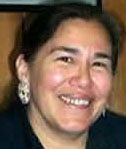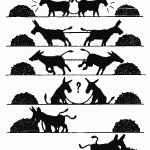Sentences for Grammar Teams (Intermediate and Advanced levels). Listen and Repeat these sentences till you are really good at saying them. Then remember to use them in class!
Read the sentences
Stories. A Tree, a Rock, a Cloud, by Carson McCullers
A story which is hard to read, especially if you want to teach students to pronounce the endings and the consonant clusters!!! 🙂
Read the story.
Download “Stories. A Tree, a Rock, a Cloud, by Carson McCullers” carsonmccullers_atreearockacloud.mp3 – Downloaded 2607 times –Useful Language. Letter-Writing. Requesting information 01
With this audio we’re pushing our section of Useful Language a bit further, to include… letter-writing!
Why record audios of that? Well, you can learn to read the language we may use in letters. In this way, you’ll remember it better. You’ll probably consolidate your speaking skills and you are likely to improve in terms of not making certain kind of grammar mistakes — those “silly mistakes” you always make and that you keep not fixing because you insist in NOT proofreading your work!!! ;D
Read this letter here.
Poems. The Housing Poem, by Dian Million
Post your comments at the Dakota in Spain blog
Read the poem at Dian Million’s webpage on Talking People, and find out more about her
Useful Language. Saying thank you 01
Read the thank you sentenceson this Talking People link
Read the thank you notes on this Talking People link
This episode contains mostly drilling (the same structure with changes in some words), so at times I won’t be repeating each sentence twice, just once. It has two sections: first, a one-page list of useful sentences to thank people different kinds of things. Then, 6 different thank you notes or letters you could learn to be fluent in! If you wish to write Thank You Notes and Letters please, post them here for correction and subsequent publication!
Useful Language. Making requests 01
Read the sentences
It includes drilling with indirect questions, too. More on indirect questions here.
Stories. Ada, by Gertrude Stein
Gertrude Stein, a vital explorer of life and art, tried to write like Cezanne painted. It’s hard to explain.
Ada is a story to her lifelong loved one.
Read Ada and read about Gertrude Stein.
Download “Stories. Ada, by Gertrude Stein” gertrudestein_ada.mp3 – Downloaded 2288 times –Useful Language. Giving contact information
This episode contains sentences you can use while speaking or in writing to give contact information.
Read the sentences.
Poems. Autobiography in 5 short chapters, by Portia Nelson

Hope you enjoy it!
Elementary. Modals. Invitations. Would you like…?
![]() This episode for Elementary (Básico) students includes some oral drilling so you can listen and repeat, and learn useful sentences, and then an explanation of the difference between “Would you like …?” and “Do you like…?” There is no transcript of this episode but if you need it, post your request at the Talking People Podcast!
This episode for Elementary (Básico) students includes some oral drilling so you can listen and repeat, and learn useful sentences, and then an explanation of the difference between “Would you like …?” and “Do you like…?” There is no transcript of this episode but if you need it, post your request at the Talking People Podcast!
Stories. Dishwashers, by michelle
Read the story (2 pdf pages)
Download “Stories. Dishwashers, by michelle” dishwashers.mp3 – Downloaded 2487 times –Useful Language. Suggestions, Proposals, Recommendations
Read those sentences at the TP Website.
Download “Useful Language. Suggestions, Proposals, Recommendations” usefullang_suggestions01.mp3 – Downloaded 1617 times –Poems. Wild Geese, by Mary Oliver
 Read this poem and find more info/activities.
Read this poem and find more info/activities.
Tell yourself this poem when you are waiting to enter an examination room! It’ll lull you a bit, soothe you down, and you’ll be able to concentrate and focus better! 🙂
Download “Poems. Wild Geese, by Mary Oliver” maryoliver_wildgeese.mp3 – Downloaded 2218 times –Useful Language. Communicative Strategies Part 3
Defending a Position,
Disagreeing & Challenging an Opinion,
Problem-solving, Reaching an Agreement, Moving On, Recap(itulating)
Useful Language. Communicative Strategies Part 2
This episode is devoted to communicative strategies, fluency and correction in conversations. Check out Part 1 (below) and Part 3 (above).
Read Part 2. Agreeing, Sitting on the Fence, Showing You Follow and Making Comments to “accompany” the person who is speaking, Inviting People to Speak










